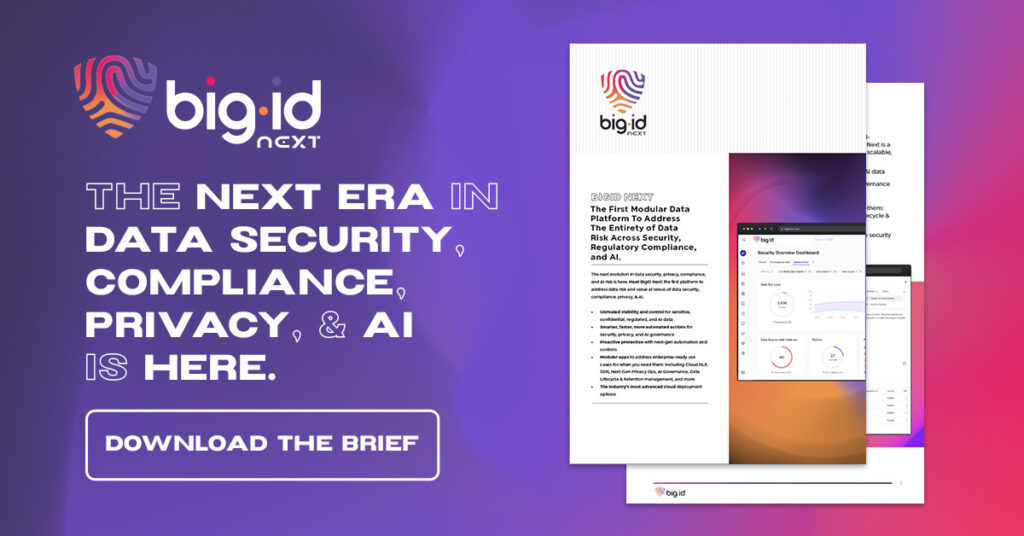The pressure is on: boardrooms want clear visibility, regulators demand accountability, and privacy programs are expected to operate at enterprise scale. But most privacy teams still rely on fragmented reports, siloed tools, and static spreadsheets—making oversight hard and impact harder to prove.
As the landscape of privacy regulations grows increasingly intricate and internal expectations rise, privacy leaders face a significant challenge: how to effectively manage a sprawling web of compliance requirements, meticulously track risk across the entire organization, and, crucially, prove the tangible effectiveness of their programs all while operating lean, with agility and speed.
The Evolving Mandate of Privacy Governance
Today’s privacy teams are no longer solely focused on ticking compliance boxes. They have evolved into multifaceted units, acting as risk managers, operational enablers, and strategic partners, collaborating with diverse business units. However, this expanded role is unfolding within an environment characterized by unprecedented demands:
- Tightening Regulatory Scrutiny: The proliferation of regulations, including GDPR and CCPA to CPRA and LGPD, mandates swifter response times, meticulous documentation, and verifiable enforcement of evolving privacy policies.
- Increasing Operational Complexity: Privacy is no longer confined to a single department. It permeates the entire organization, encompassing vendors, data owners, legal, IT, marketing, and numerous other stakeholders.
- Heightened Executive Expectations: Boards of directors, auditors, and executive leadership increasingly require clear, quantifiable metrics and regular, insightful updates on privacy program health and performance.
- The Challenge of Fragmented Tools and Workflows: Many organizations still grapple with disconnected systems for managing Data Subject Access Requests (DSARs), data mapping, retention tracking, and risk assessments. This siloed approach inevitably leads to manual reporting, reactive triage of issues, and a lack of clear accountability.
In this era of cross-functional and high-profile privacy, the need for enhanced visibility, robust performance tracking, and strategic risk prioritization has become mission-critical for organizational success and reputation.

The Limitations of Traditional Privacy Reporting
Traditional privacy reporting mechanisms were simply not designed to handle the scale, speed, and intense scrutiny of today’s privacy landscape. Their inherent limitations include:
- Siloed Data Perspectives: Relying on separate tools for managing requests, assessments, and data retention prevents teams from gaining a holistic, interconnected view of their privacy posture.
- Inefficient Manual Reporting: The time-consuming process of compiling spreadsheets and generating one-off reports often fails to capture the nuanced trends and critical insights that resonate with executive leadership.
- Lack of Strategic Risk Prioritization: Privacy teams often struggle to discern which risks pose the greatest threat and, consequently, where to strategically allocate their limited resources for maximum impact.
- Absence of Operational Benchmarking: Without standardized metrics and comparative data, it’s difficult to objectively assess whether program performance is improving, stagnating, or falling behind industry best practices.
Today’s privacy executives are no longer just enforcers of policy; they are expected to demonstrably reduce risk, meticulously track compliance health, and report progress with precision and clarity. However, outdated tools, fragmented data landscapes, and manual reporting processes often present insurmountable obstacles.
BigID’s Privacy Executive Console Turns Oversight into Action
BigID’s Privacy Executive Console elevates privacy program oversight from a reactive reporting burden to a proactive strategic capability, empowering organizations to measure what truly matters, mitigate risks with greater speed and efficacy, and drive tangible outcomes that resonate with executives, regulators, and key stakeholders alike.

Gain Unified Privacy Risk Visibility
Achieve a comprehensive understanding of where privacy risks reside within your organization and take decisive action with consolidated views across:
- Legal Entities and Jurisdictions: Understand risk variations across different regulatory environments (e.g., EU vs. US).
- Third-Party Vendors and Cross-Border Data Sharing: Identify and manage risks associated with external partners and international data transfers.
- Sensitive Data Assets: Gain insight into the security and compliance of critical data repositories like HR systems, customer databases, and marketing technology stacks.
Drill down into each category to pinpoint ownership, prioritize remediation efforts based on potential impact, and effectively guide the enforcement of privacy policies across the organization.
Monitor Compliance Health at a Glance
Replace static, outdated spreadsheets with a dynamic console that provides continuous monitoring of key compliance indicators:
- DSAR Request Volume and SLA Performance: Track the efficiency and timeliness of your organization’s response to data subject requests.
- Privacy Assessments and Processing Activities: Gain real-time visibility into the status and completion of critical privacy assessments.
- Retention Policy Enforcement and Overdue Deletions: Ensure adherence to data retention schedules and identify potential compliance gaps.
Configurable alerts proactively notify relevant teams when action is required, enabling the prevention of compliance breaches before they escalate into significant issues.
Track Operational KPIs and SLA Performance
Empower privacy leaders to measure and optimize program performance with key operational metrics:
- SLA Adherence Rates and Trends: Monitor your organization’s ability to meet established service level agreements for privacy-related tasks.
- Fulfillment Metrics by Region, Request Type, or Department: Gain granular insights into operational efficiency across different segments of the organization.
- Time-to-Close Benchmarks for DSARs and Privacy Requests: Identify bottlenecks and areas for improvement in request fulfillment processes.
This enhanced transparency facilitates faster, data-driven decisions, enables smarter allocation of resources, and fosters stronger alignment across functional teams.
Enable Executive-Ready Reporting
Equipped with intuitive visualizations and customizable dashboards, the Privacy Executive Console empowers leaders to:
- Showcase Compliance Progress and Privacy Maturity: Clearly communicate your privacy program’s advancements and overall strength to executive stakeholders.
- Highlight Key Risk Areas with Supporting Drill-Downs: Provide context and detailed information behind identified risks, enabling informed decision-making at the highest levels.
- Align Reporting Across Business Units and Global Teams: Ensure consistent and comprehensive reporting across the entire organization, regardless of geographic location or departmental structure.
Whether preparing for a crucial board meeting or navigating a rigorous regulatory audit, the console transforms raw metrics into meaningful, strategic conversations.
Privacy Leadership Driven by Insight, Not Guesswork
BigID’s Privacy Executive Console is more than just a dashboard; it’s a command center specifically designed for privacy teams aspiring to lead with data-driven insights, act with strategic precision, and deliver measurable results that demonstrably impact the organization’s bottom line and reputation.
- Strengthen Oversight Across All Privacy Operations: Gain comprehensive control and visibility into your privacy program activities.
- Streamline Reporting to Stakeholders and Regulators: Generate clear, concise, and impactful reports that meet the diverse needs of internal and external audiences.
- Drive Strategic Impact from Your Privacy Investments: Maximize the return on your privacy technology and personnel by aligning program activities with key business objectives.
Ready to elevate your privacy program? Schedule a 1:1 with our privacy experts today for a demo!



